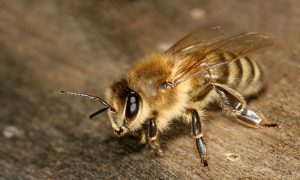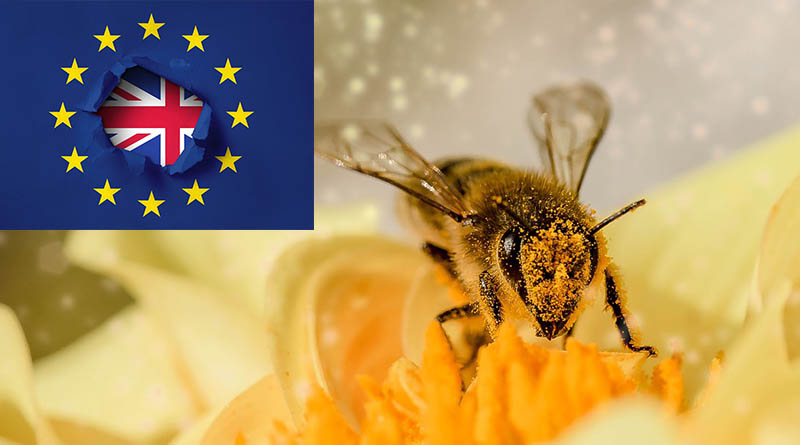How Brexit has affected bees and what you can do to save them
Did you know that Brexit has had an effect on bees in Kent?
Kent County Council have recently destroyed a nature reserve to make way for Operation Brock, a scheme set up on the motorway in case of a no deal Brexit.
This decision by the council demolished some of the rarest orchids in Britain whilst ruining a home for 20 different types of butterflies and a large population of bees.
Ahead of World Bee day on May 20th, the Canterbury Hub has spoken with Rosie Earwaker, Bee Roads Officer at the Kent Wildlife Trust to see what we can do to help with the decline of the species and how they are restoring their homes.

What is being done to restore the destroyed nature reserves that attracted the bees?
Following discussions with Kent County Council, we will be working together to restore the Bluebell Hill Roadside Nature Reserve over the next few weeks. This work needs to be done sensitively by hand and Kent County Council will be funding equipment, tool and refreshments for staff and volunteers to join in this effort.
VERGING ON DISASTER: orchid-rich road verge scraped to the bone https://t.co/JHKl9LrbJB@ChrisGPackham @TheMontyDon @Butterfly_bros @MarkAvery @CarolineLucas @tracey_crouch @sarahwollaston @DrTrevorDines @ukorchids @dunnjons @LeifBersweden @wildflower_hour @KentWildlife pic.twitter.com/A0zHMnI8ZI
— Plantlife (@Love_plants) April 11, 2019
What are the main things we can do to help bees?
- Reduce our use of pesticides
- Grow pollinator friendly plants (some flowers do not produce nectar so are no good for insect pollinators), ensuring that there is always something in flower for different months of the year when bees are active (generally February to October, but there are some winter active bumblebees now). Different bee species have different length tongues and as such can pollinate different types of flower, so also ensuring that there are different shaped flowers throughout the season is important for maintaining a diversity of bees.
- Providing nesting habitat – for bumblebees this could be bird boxes (e.g. Tree Bumblebees) and areas of longer, tussocky grassland, and for solitary bees this could be creating “bee banks” for mining bees to burrow into the ground to nest or providing “bee hotels” or dead wood in sunny situations for them to nest in.
- Many people think that they will be helping bees by getting a honey bee hive for their garden. This is not in fact true and could be making the situation worse for our native bees by adding 50,000+ bees to the environment that will compete for floral resources and potentially spread pathogens. I would urge people to think carefully before placing a bee hive in their garden.
How are you helping the bees?
At Kent Wildlife Trust, we are working with Bumblebee Conservation Trust on a Heritage Funded project called ‘Making a Buzz for the Coast’.
We are creating ‘Bee Roads’, which are roadside nature reserves that we are managing specifically for bees and other pollinators in the Swale. There are many rare species of bee in this area such as the Shrill Carder Bee and we are hoping to better connect populations of these species through providing better quality habitat with targeted habitat management work and monitoring to evidence this.
Further to this, we run a ‘Wild About Gardens’ scheme where members of the public can enter their wildlife friendly gardens for a chance to win the title of ‘Garden with the Best Buzz’ along with other awards for different wildlife groups.
What is the difference between bees and wasps?
Wasps have a “wasp waist”, which is generally much narrower than that of bees, and wasps are generally less hairy than bees. The hairs on bees are plumose (feather-like), whereas wasps have simple, unbranched hairs.
Bees are vegetarian, feeding on pollen and nectar from flowers, whereas wasps feed on a variety of different invertebrates while also nectaring on flowers like bees (they are also important pollinators).
Read more from The Canterbury Hub:
